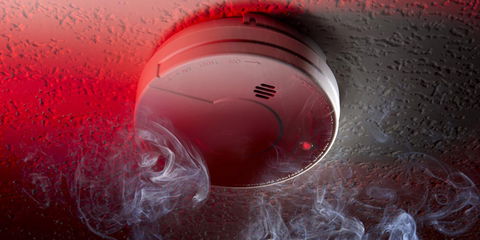Published: 3 November 2014
Category: Trade Talk
Question from Voltimum user: After the sixty minutes show I have been asked by people about regulations and where alarms should be placed, to the best of my knowledge standards only require one hard wired alarm and do not specify what type.

The recent 60 Minutes story on smoke alarms has stimulated a lot of discussion. Avoiding the hype of the story we should consider the basic facts.
- Depending upon your area, mains powered smoke alarms have been mandatory in new buildings and homes that have undergone significant renovation since 1997.
- All smoke alarms used in Australia must comply with Australian Standard AS3786 which should be clearly marked on the package and/or the product.
- The most popular smoke alarms are the photoelectric and ionization types. Both types are accepted and recognized by the standard and the building code. If the packaging does not state it clearly you can identify the ionization type as they have a radioactive symbol on them where the photoelectric ones do not.
- Ionization smoke alarms use a small amount of radioactive material to ionize the air in the sensing chamber. The ionized air is conductive and a current will flow between two sensing electrodes. When the air is contaminated by smoke particle the current flow between the electrodes changes and this is sensed by the smoke alarm.
- The photoelectric type used a light emitting diode and a light sensor in the sensing chamber. When smoke particles are detected in the sensing chamber the light is 'scattered' in the sensing chamber and the alarm reacts.
- Research has shown the ionization type is better suited to a flaming fire and the photoelectric type is better suited to a smoldering fire.
- Which one to choose or recommend? The government fire services departments across many jurisdictions recommend the use of photoelectric smoke alarms in areas where people sleep as often a fire will commence with a smoldering action and therefore this type provides an earlier alarm for occupants. The early reaction was demonstrated in the 60 Minutes story.
- The fire services authorities usually recommend the smoke alarm be installed between the sleeping areas and the living areas.
- In the commercial world I am not sure on the price levels of smoke alarms as it is not my area of expertise. I believe the ionization types are slightly less expensive. Clearly both types are acceptable by the regulations however most of the fire services authorities carry a higher recommendation for the photoelectric type for use in homes.
- I note that Fire and Rescue NSW recommend a combination of both photoelectric and ionization types in homes. This is an ideal solution but perhaps not as economic.
Answered by: Ian Richardson, Product Manager - Line Protection, ABB Australia
Do you have an 'Ask an Expert' question? Click here to ask your question!
